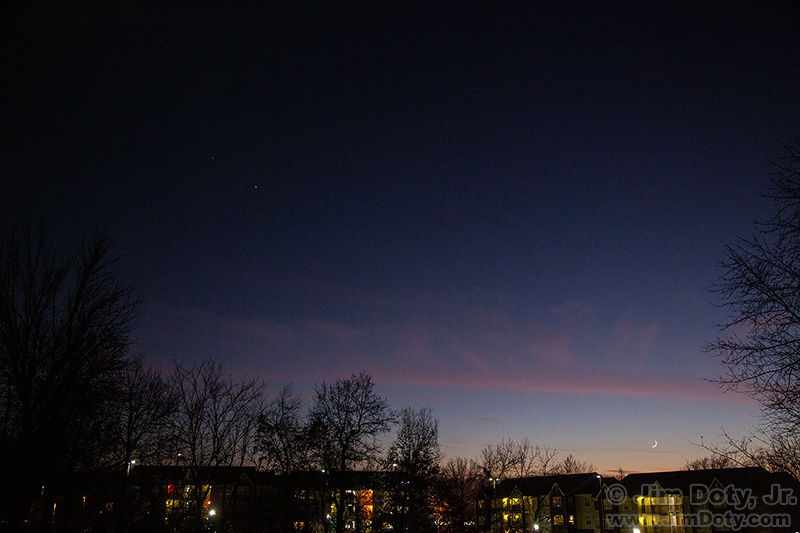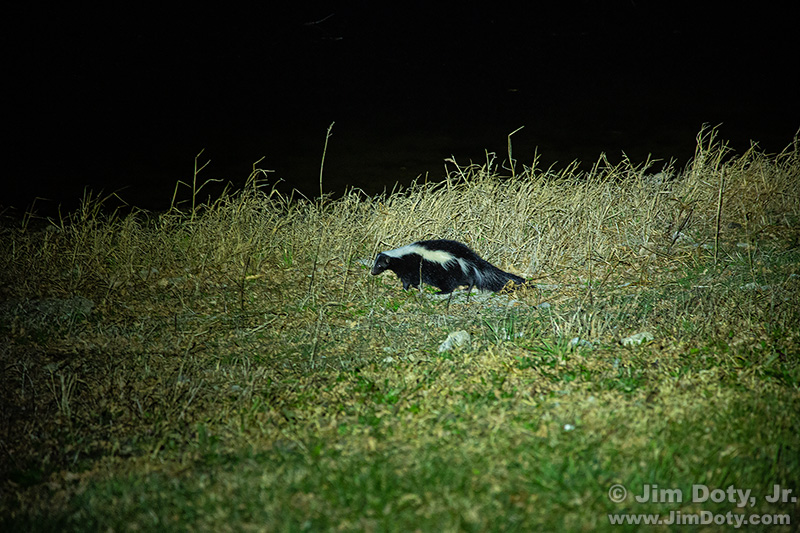Exposure Data: Canon 5D Mark III, Canon EF 50mm lens. f/4, 2.5 seconds, ISO 800.
For quite some time I have wanted to photograph 8 planets in less than one 24 hour day, along with the sun and moon. It is not always possible due to one or more of the planets being lost in the glow of the daytime sun. Cloudy weather can get in the way too. Five years ago today, November 16, 2020, was the day. I finally had my chance and I accomplished my goal in 12 hours and 27 minutes.
I began with Venus and Mercury early in the morning. Click any of these images to see larger versions.
Exposure Data: Canon 5D Mark III, Canon EF 24-105mm zoom lens at 105mm. f/11, 1/400 second, ISO 100.

The sliver of a moon at 5:38 pm, November 16, 2020, just over the Small Apartments at Graceland University. Saturn and Jupiter are to the upper left.
Exposure Data: Canon 5D Mark III, Canon EF 24-105mm zoom lens at 32mm. f/11, 1/25 second, ISO 3200.
Exposure Data: Canon 5D Mark III, Canon EF 24mm lens. f/4, 8 seconds, ISO 3200.

6 Planets: Uranus, Mars, Neptune, Saturn, Jupiter, and Earth near Lake La Shane at 6:28 pm. November 16, 2020
Exposure Data: Canon 5D Mark III, Canon EF 15mm lens. f/3.5, 30 seconds, ISO 3200.
Exposure Data: Canon 5D Mark III, Canon EF 15mm lens. f/3.5, 30 seconds, ISO 3200.
This is a cropped “closeup” from the middle of the prior photo of 6 planets. Neptune is the faint bluish streak just to the left of the capital N in Neptune. Compared to everything else in this photograph, Neptune is quite dim.
What about Pluto? It is too dim to photograph with the equipment I have. Neptune (see the cropped “closeup”) is very dim in the 6 planet photo, and Pluto is less than 1/100 the brightness of Neptune. According to night sky charts for this date and time, Pluto was located just below and very close to Jupiter.
Exposure Data: Canon 5D Mark III with flash, Canon EF 24-105mm zoom lens at 105mm. f/4, 1/20 second, ISO 3200.
A skunk was wandering around near my picture taking area. Fortunately for me, it left me alone.





